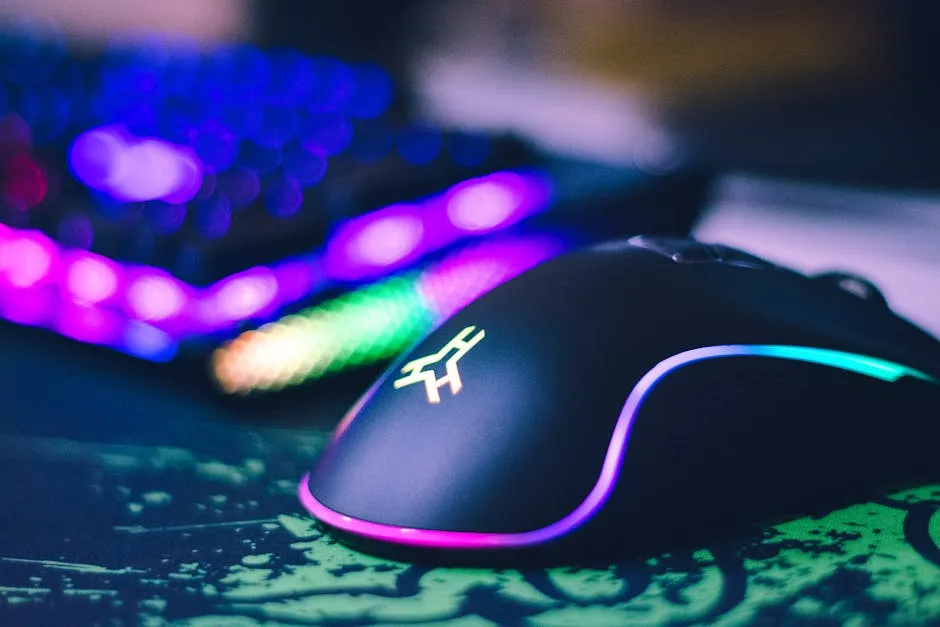Introduction
League of Legends stands tall as a titan in the esports realm. Released by Riot Games in 2009, it quickly transformed competitive gaming into a global spectacle. With millions of players worldwide, it has grown into a cornerstone of the esports ecosystem. The game’s appeal is undeniable, attracting both casual gamers and dedicated fans alike.
The growth of esports has been staggering. From small local tournaments to grand international spectacles, the industry has seen exponential expansion. This surge in popularity has also led to a growing interest in statistics that drive the competitive scene. Fans and analysts alike yearn for data to better understand match outcomes, player performance, and team strategies.
This article aims to provide an in-depth analysis of League of Legends esports statistics. We’ll cover various aspects, including player performance metrics, match results, and tournament data. By the end, you’ll have a clearer picture of how statistics shape this dynamic and exciting field.

Section 1: The Importance of Esports Statistics
1.1 What Are Esports Statistics?
Esports statistics are critical numbers and data points that define competitive gaming. They provide insights into player performance, match outcomes, and tournament successes. These stats help fans, analysts, and teams gauge how well players and teams perform.
Different types of statistics exist to capture the competitive spirit of games like League of Legends. Player stats include metrics like kills, deaths, assists, and KDA ratios, which measure a player’s effectiveness. Match results track wins and losses, offering a snapshot of team performance over time. Tournament outcomes showcase which teams dominate the competition and how prize pools fluctuate.
The relevance of these statistics cannot be understated. They serve as the backbone for analysis and strategy, helping teams refine their gameplay. Understanding these numbers allows fans to engage more deeply with the sport, transforming passive viewing into active analysis.
As we progress through this article, we’ll uncover how these statistics illuminate the competitive landscape of League of Legends, providing valuable insights for players and fans alike.
If you want to elevate your gaming experience while diving into the world of esports, check out the Razer DeathAdder Elite Gaming Mouse. With its ergonomic design and precision, it’s perfect for those long gaming sessions where every click counts!

1.2 Why Statistics Matter in League of Legends
Statistics play a vital role in shaping the competitive landscape of League of Legends. They’re not just numbers; they’re the backbone of strategic decisions for teams, player recruitment, and fan engagement. Let’s break this down.
First, teams use statistics to refine their strategies. By analyzing match data, they can identify patterns and weaknesses in their gameplay. For example, if a team consistently struggles against a specific champion, they can adjust their draft strategy or practice to counter it. This data-driven approach can mean the difference between winning and losing in high-stakes tournaments.
Player recruitment also benefits immensely from statistics. Teams look at player metrics to evaluate potential recruits. A player with a high KDA (kills, deaths, assists) ratio is often more appealing than one without. Teams analyze performance statistics to find the right fit for their roster, ensuring that they select players who can contribute to their overall strategy effectively.
Want to dominate your opponents? You might want to grab The League of Legends Strategy Guide: How to Dominate Your Opponents. It’s filled with tips that can give you the edge you need!

Fan engagement is another crucial aspect influenced by statistics. Fans love to follow their favorite players and teams through their stats. Online platforms provide detailed statistics, allowing fans to dissect performances and engage in discussions. This engagement fosters a vibrant community and keeps fans invested in the competitive scene.
Let’s look at a real-world example. Team G2 Esports famously uses statistics to enhance their gameplay. They analyze their performance data to adapt their strategies mid-season. This proactive approach keeps them competitive and often results in improved standings in major leagues.
In summary, statistics in League of Legends are more than just numbers on a screen. They shape strategies, drive player recruitment, and deepen fan participation. Embracing this data-centric approach is essential for teams aiming for success in the fiercely competitive environment of esports.

Section 3: Key League of Legends Esports Statistics
3.1 Player Performance Statistics
3.1.1 Top Players and Their Metrics
When we talk about the League of Legends esports scene, players often steal the spotlight. Ever wondered what makes them stand out? Let’s take a look at some key statistics that define the top players in this thrilling game.
First up, we have KDA (Kill/Death/Assist) ratios, a vital metric for evaluating a player’s effectiveness. The higher the KDA, the better the player performs. Here’s a quick comparison of some leading players:
| Player | KDA Ratio | Win Rate | Kills | Deaths | Assists |
|---|---|---|---|---|---|
| Faker | 5.1 | 72% | 300 | 59 | 150 |
| ShowMaker | 4.8 | 68% | 270 | 56 | 140 |
| Uzi | 5.0 | 70% | 280 | 60 | 160 |
| Doinb | 4.5 | 65% | 260 | 58 | 130 |
These numbers reveal the prowess of each player. Faker, often hailed as the greatest of all time, showcases a KDA that’s impressive, complemented by a staggering win rate. It’s no wonder the fans admire him!
Now, while KDA provides a glimpse into individual brilliance, it’s essential not to overlook the impact of teamwork. Assists matter just as much as kills! Players like Uzi shine with their ability to not only secure kills but also support their teammates effectively.

3.1.2 Champion Performance Analysis
The champions players choose can significantly impact match outcomes. Let’s dive into some champion performance statistics from competitive play.
Champion pick rates and win rates fluctuate based on the meta. For instance, in the current patch, champions like Lee Sin and Maokai have emerged as fan favorites, boasting high pick rates and solid win rates.
| Champion | Pick Rate | Win Rate |
|---|---|---|
| Lee Sin | 35% | 52% |
| Maokai | 30% | 54% |
| Azir | 25% | 48% |
| Yuumi | 28% | 49% |
The meta evolves, and so do the strategies. Teams must adapt their compositions to leverage champion strengths. For instance, Lee Sin’s mobility enables aggressive plays, while Maokai offers crowd control and tankiness.
Understanding how the meta affects champion selection is crucial for teams. Certain champions may dominate the scene for weeks, while others might drop off. Teams often analyze these trends to create winning strategies.

3.2 Team and Match Statistics
3.2.1 Team Performance Metrics
Team performance metrics offer a broader view of success in League of Legends. Metrics like win/loss ratios, average game times, and objectives secured help gauge a team’s overall effectiveness.
Consider this: a team with a win rate of 65% usually showcases a well-coordinated strategy. Let’s examine some current top teams:
| Team | Win Rate | Average Game Time | Objectives Secured |
|---|---|---|---|
| T1 | 70% | 32:45 minutes | 15 |
| DWG KIA | 68% | 33:10 minutes | 14 |
| G2 Esports | 65% | 31:50 minutes | 13 |
| RNG | 62% | 34:20 minutes | 12 |
T1 leads the charge with an impressive win rate and quick game finishes. Their ability to secure objectives plays a crucial role in this success. Teams that excel in taking down towers, dragons, and barons often dictate the pace of the game.
Average game time also gives insights into team dynamics. Shorter games can indicate a team’s ability to capitalize on early advantages. However, longer games might suggest a struggle to secure decisive victories.

3.2.2 Match Formats and Results
Match formats, such as Best of One (BO1), Best of Three (BO3), and Best of Five (BO5), create different dynamics in gameplay. Each format influences statistics in unique ways.
For example, BO1 matches, typically found in group stages, can lead to unpredictable results. Conversely, BO5 matches allow teams to showcase deeper strategies and adaptability. The recent World Championships highlighted these formats effectively:
| Format | Total Matches | Average Game Duration | Notable Trends |
|---|---|---|---|
| BO1 | 120 | 30:10 minutes | Higher upset rates |
| BO3 | 80 | 31:45 minutes | More strategic depth |
| BO5 | 40 | 34:20 minutes | Teams adapting mid-series |
In conclusion, understanding these statistics provides insight into the ever-evolving landscape of League of Legends esports. Whether it’s player performance, champion choices, or team dynamics, data drives the narrative in this thrilling competitive arena. So, keep an eye on the stats—they might just reveal the next big upset!

And speaking of performance, if you’re serious about gaming, you should consider investing in a Logitech G Pro X Mechanical Gaming Keyboard. With customizable keys and a sleek design, it’s a game-changer for serious players!

Section 5: Future Trends in League of Legends Esports Statistics
5.1 Innovations in Data Collection and Analysis
In the fast-paced world of esports, data collection isn’t just a trend; it’s a necessity. Recent advancements in data analytics are revolutionizing the way we view League of Legends esports statistics. Gone are the days of relying solely on basic metrics. Now, teams and analysts use sophisticated tools to gather and analyze data in real-time.
Platforms like Riot Games’ Official Esports Data and GRID are at the forefront, providing a treasure trove of information. They offer real-time updates on match statistics, player performance, and even champion effectiveness. With dashboards displaying live data, teams can adjust their strategies on the fly. Imagine coaches calling for an unexpected strategy change based on current player KDA ratios or team objective rates!
Another noteworthy innovation is the League of Legends Esports Data Portal (LDP). This platform serves as a central hub for all esports data, ensuring that teams, analysts, and fans have easy access to reliable information. By consolidating data from various sources, the LDP enhances the integrity and accuracy of esports statistics, giving everyone from casual fans to professional analysts a better understanding of the game.

Moreover, data analytics tools have become more user-friendly. Analysts no longer need PhDs in statistics to interpret complex data sets. Intuitive interfaces allow users to visualize trends and patterns quickly, making it easier for teams to identify weaknesses in their opponents or themselves.
And if you’re looking to capture your gaming moments, consider the Elgato Game Capture HD60 S. It’s perfect for those who want to stream or record their gameplay in stunning quality!

5.2 Predictions for the Future
As we look to the horizon, the future of player performance tracking and fan engagement appears bright. Emerging technologies like AI and machine learning are set to take esports statistics to dizzying new heights. Imagine AI algorithms that can predict player performance based on historical data, current form, and even psychological factors! Such insights could redefine how teams approach player recruitment and game strategy.
Fan engagement will also evolve with the integration of augmented reality (AR) and virtual reality (VR). Picture this: fans wearing VR headsets could experience matches as if they were on the battlefield, while real-time stats overlay the action. This immersive experience would not only captivate existing fans but also attract new audiences.

Additionally, we might see the rise of personalized statistics. Just like tailored recommendations on Netflix, fans could receive customized insights based on their viewing habits. Want to know how your favorite player’s performance stacks up against the competition? In the future, it might just be a click away.
With the continuous growth of esports, the importance of accurate and accessible statistics for both players and fans will only increase. As more data becomes available and technology advances, we can expect to see a more nuanced understanding of gameplay, leading to richer experiences for everyone involved.

FAQs
What are the most important statistics to follow in League of Legends esports?
Key metrics to keep an eye on include KDA (Kill/Death/Assist), win rates, and team performance statistics. KDA ratios offer insights into a player’s effectiveness, while win rates indicate overall success. Team performance statistics, such as average game time and objectives secured, help gauge a team’s strength over time.
How can fans access live League of Legends esports statistics?
Fans can access live statistics through various platforms and websites. Riot Games provides official esports data, while sites like E-sportstats and OP.GG offer real-time insights and match updates. These resources allow fans to stay connected with ongoing tournaments and player performances.
Why do statistics matter for team strategies?
Statistics are crucial for informed decision-making in competitive play. Teams analyze data to refine strategies, understand opponent weaknesses, and improve overall performance. By leveraging statistics, teams can make data-driven decisions that enhance their chances of success in matches and tournaments.
How has the viewership of League of Legends esports changed over the years?
Viewership has seen remarkable growth, with millions tuning in for major events like the World Championships. Factors contributing to this growth include expanding global interest, the rise of streaming platforms, and the increasing accessibility of esports data. The game’s popularity continues to soar, captivating both seasoned players and new fans alike.
Please let us know what you think about our content by leaving a comment down below!
Thank you for reading till here 🙂
For more insights on how to effectively analyze data in economics and statistics, check out these tips for effective data analysis.
All images from Pexels




